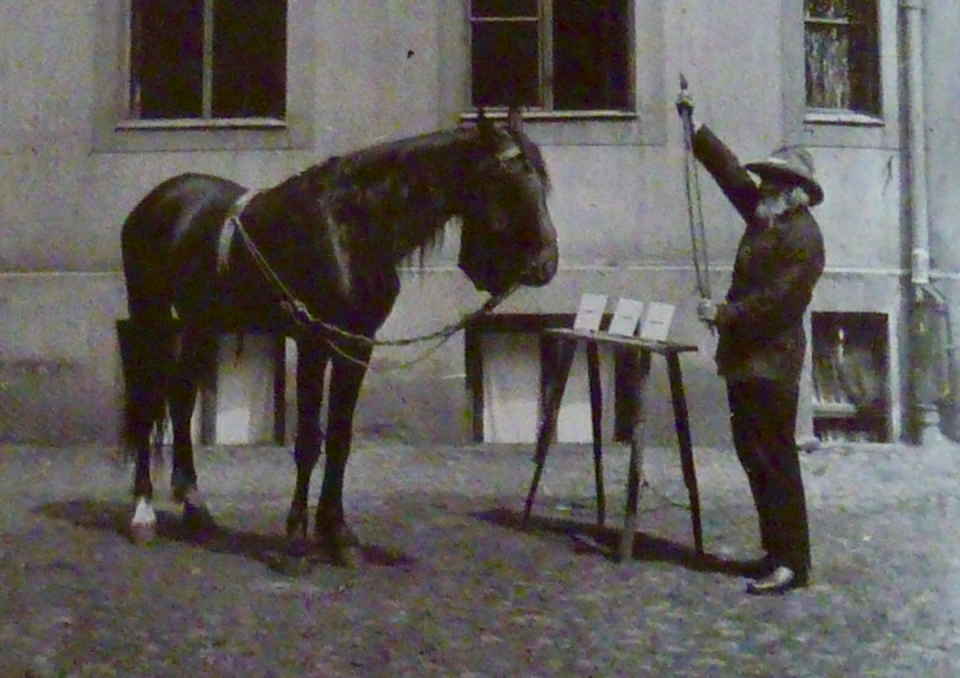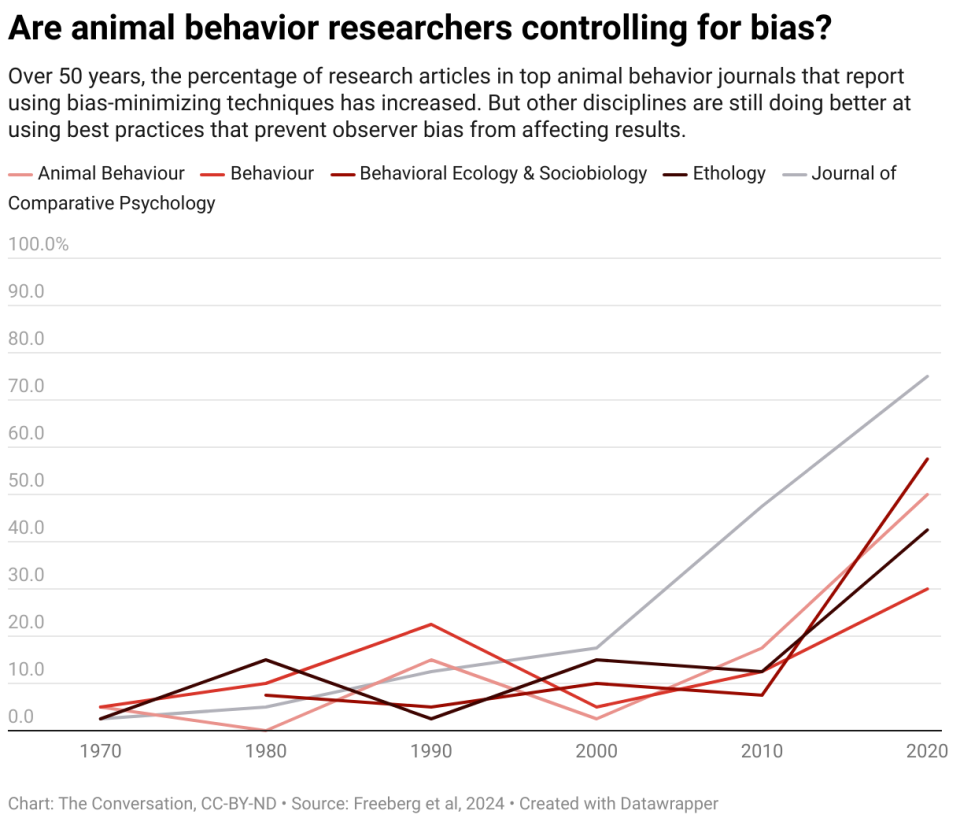Animal behavior research relies on careful observation of animals. Researchers might spend months in a jungle habitat watching tropical birds mate and raise their young. They can track the rates of physical contact in cattle herds of different densities. Or they could record the sounds whales make as they migrate through the ocean.
Research into animal behavior can provide fundamental insights into the natural processes that affect ecosystems around the globe, and our own human minds and behaviour.
I study animal behavior – and also the research reported by scientists in my field. One of the challenges of this type of science is to ensure that our own assumptions do not influence what we think we see in animal subjects. Like everyone, the way scientists see the world is shaped by biases and expectations, which affect how data is recorded and reported. For example, scientists living in a society with rigid gender roles for women and men might interpret what they see animals doing as a reflection of those same divisions.
The scientific process corrects such mistakes over time, but scientists have faster methods available to minimize potential observer bias. Animal behavior scientists have not always used these methods – but that is changing. A new study confirms that, over the past decade, studies have increasingly adhered to strict best practices that can minimize potential biases in animal behavior research.

Biases and self-fulfilling prophecies
A German horse named Clever Hans is widely known in the history of animal behavior as a classic example of unconscious bias leading to a false result.
Around the turn of the 20th century, Clever Hans was purported to be able to do math. For example, in response to his owner’s prompt “3 + 5,” Clever Hans would tap his claws eight times. His owner would then reward him with his favorite vegetables. The initial observers reported that the horse’s ability was legitimate and that its owner was not cheating.
However, careful analysis by a young scientist named Oskar Pfungst showed that if the horse could not see its owner, it could not respond correctly. So, although Clever Hans wasn’t good at math, he was very good at picking up on his owner’s subtle, unconscious clues that gave him the math answers.
In the 1960s, researchers asked human study participants to code the learning ability of rats. The participants were told that their rats had been artificially selected over many years to be either “bright” or “slow” learners. Over several weeks, the participants ran their rats through eight different learning experiments.
In seven of the eight experiments, the human participants rated the “white” rats as better learners than the “leper” rats when, in fact, the researchers randomly selected rats from their breeding colony. With bias the human participants saw what they thought they should see.
Eliminate bias
Given the clear potential for human biases to skew scientific results, textbooks on animal behavior research methods since the 1980s have urged researchers to verify their work using at least one of two methods sensible.
One is to ensure that the researcher observing the behavior does not know whether the subject comes from one study group or the other. For example, a researcher would measure the behavior of a cricket without knowing whether it came from the experimental or control group.
Another best practice is to use a second researcher, who has fresh eyes and no knowledge of the data, to observe the behavior and code the data. For example, while analyzing a video file, I count chickadees taking seeds from a feeder 15 times. Later, a second independent observer counts the same number.
But researchers in animal behavior often do not use these methods to minimize potential biases, perhaps because these best practices take more time and effort.
In 2012, my colleagues and I reviewed nearly 1,000 articles published in five leading animal behavior journals between 1970 and 2010 to see how many reported these methods to minimize potential bias. Less than 10% did so. In contrast, the journal Infancy, which focuses on human infant behavior, was much more rigorous: More than 80% of its articles reported using methods to avoid bias.
It’s a problem that’s not just limited to my field. A 2015 review of published articles in the life sciences found that blinded protocols are uncommon. It was also found that studies that used blinded methods found smaller differences between the main groups observed compared to studies that did not use blinded methods, suggesting that potential biases led to more significant results.
In the years after we published our article, it was regularly cited and it was hoped that there was any improvement in the field. Therefore, we recently reviewed 40 articles from each of the same five journals for the year 2020.


We found an improvement in the rate of papers reporting improved bias control in all five journals, from under 10% in our 2012 article to just over 50% in our new review. However, these reporting rates are still behind Infancy magazine, which was 95% in 2020.
Overall, things are looking up, but the area of animal transport can be even better. In practice, with audio and video recording technology becoming more portable and affordable, it is becoming easier to implement methods that minimize potential biases. The more the field of animal behavior adheres to these best practices, the stronger the knowledge base and public confidence in this science will be.
This article is republished from The Conversation, a non-profit, independent news organization that brings you reliable facts and analysis to help you make sense of our complex world. It was written by: Todd M. Freeberg, University of Tennessee
Read more:
Todd M. Freeberg does not work for, consult with, own shares in, or receive funding from any company or organization that would benefit from this article. benefit of this article, and has not disclosed any relevant relationships beyond their academic appointment.